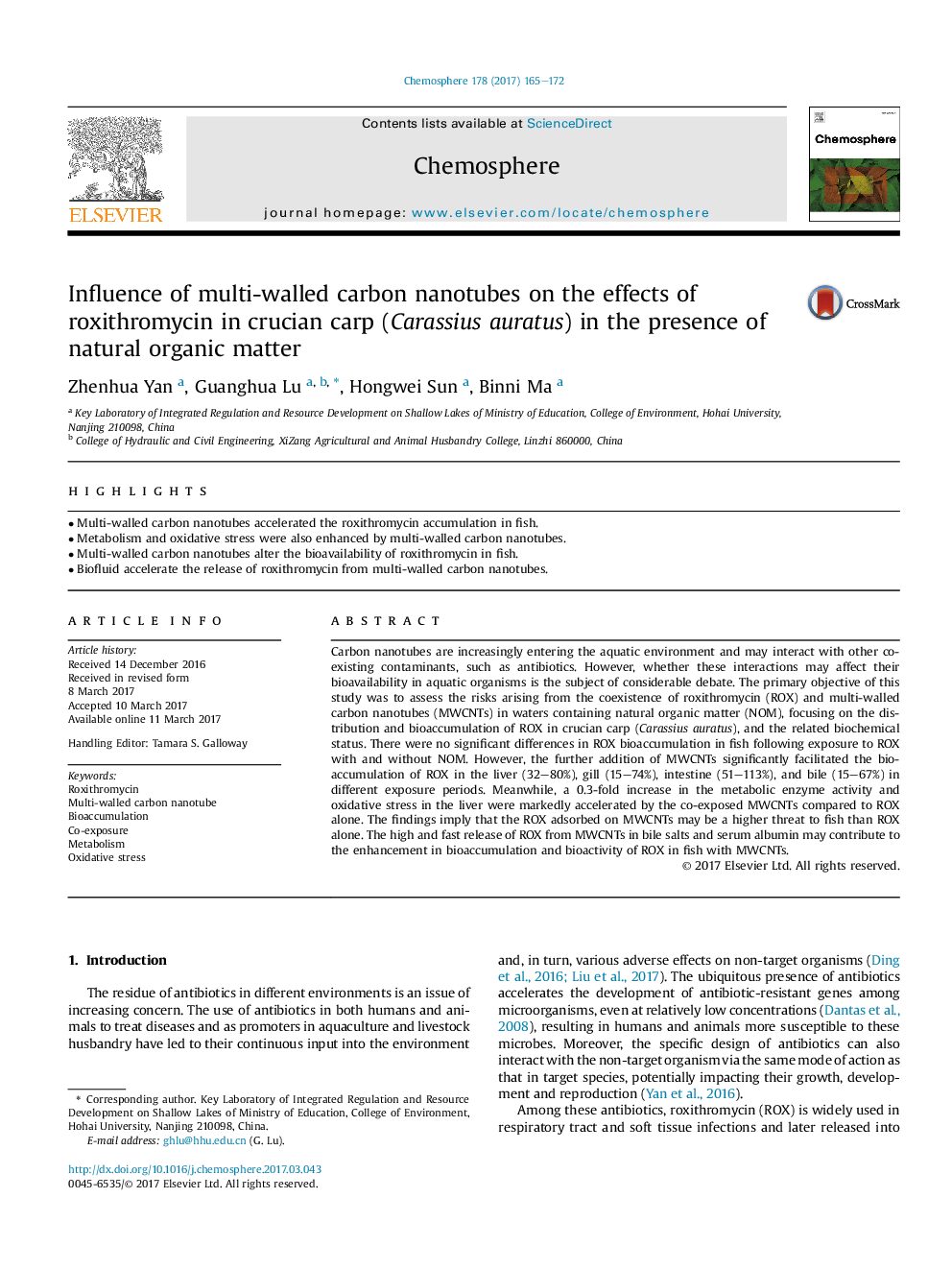| Article ID | Journal | Published Year | Pages | File Type |
|---|---|---|---|---|
| 5747246 | Chemosphere | 2017 | 8 Pages |
Abstract
Carbon nanotubes are increasingly entering the aquatic environment and may interact with other co-existing contaminants, such as antibiotics. However, whether these interactions may affect their bioavailability in aquatic organisms is the subject of considerable debate. The primary objective of this study was to assess the risks arising from the coexistence of roxithromycin (ROX) and multi-walled carbon nanotubes (MWCNTs) in waters containing natural organic matter (NOM), focusing on the distribution and bioaccumulation of ROX in crucian carp (Carassius auratus), and the related biochemical status. There were no significant differences in ROX bioaccumulation in fish following exposure to ROX with and without NOM. However, the further addition of MWCNTs significantly facilitated the bioaccumulation of ROX in the liver (32-80%), gill (15-74%), intestine (51-113%), and bile (15-67%) in different exposure periods. Meanwhile, a 0.3-fold increase in the metabolic enzyme activity and oxidative stress in the liver were markedly accelerated by the co-exposed MWCNTs compared to ROX alone. The findings imply that the ROX adsorbed on MWCNTs may be a higher threat to fish than ROX alone. The high and fast release of ROX from MWCNTs in bile salts and serum albumin may contribute to the enhancement in bioaccumulation and bioactivity of ROX in fish with MWCNTs.
Keywords
Related Topics
Life Sciences
Environmental Science
Environmental Chemistry
Authors
Zhenhua Yan, Guanghua Lu, Hongwei Sun, Binni Ma,
